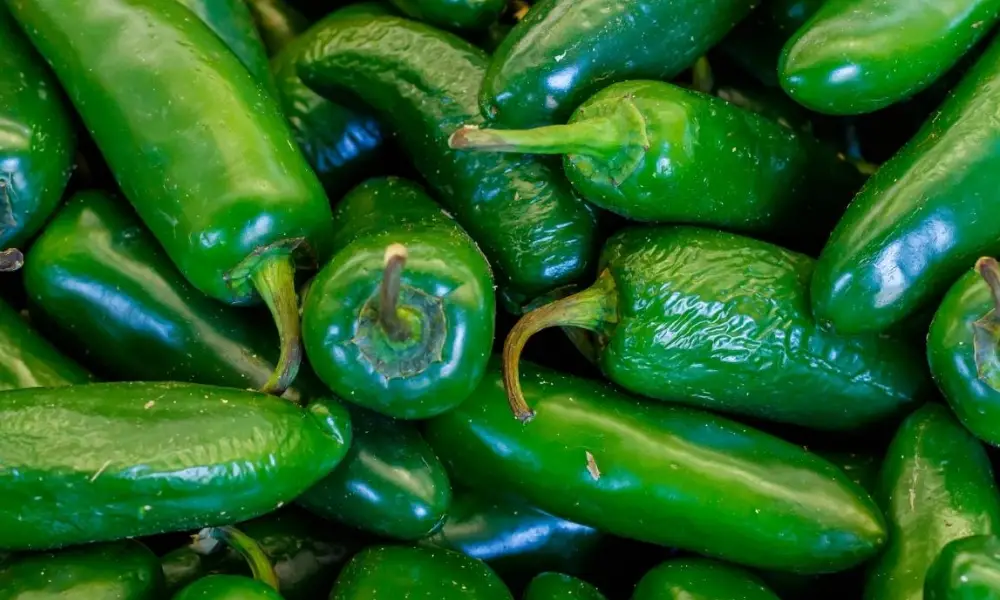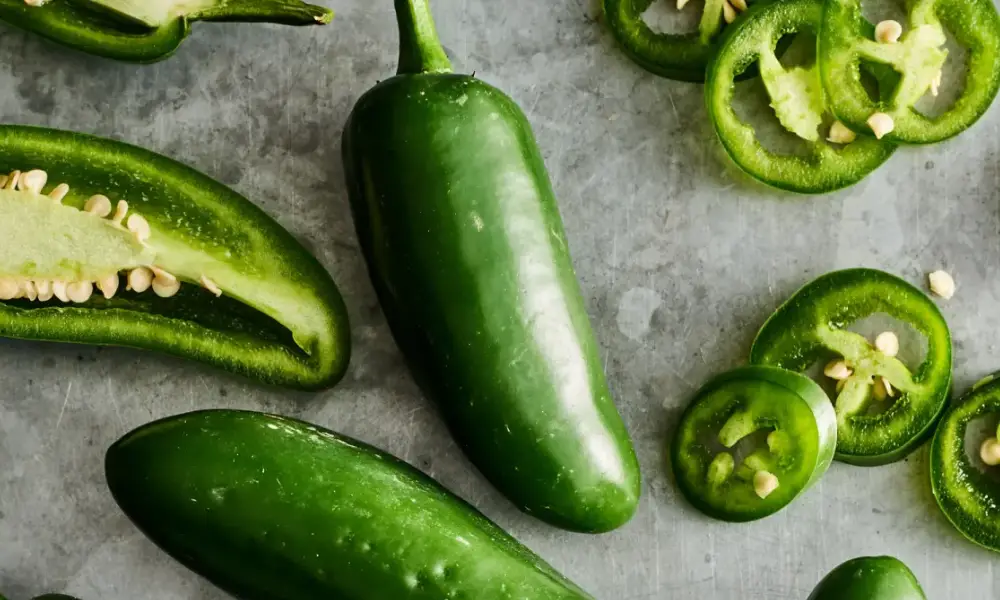Tacos, nachos, and other Mexican cuisine favorites are the ideal dishes to top with jalapeno peppers. Although fresh jalapenos are always preferred, there are instances when your crop may be greater than you can manage, or your eyes may be larger than your stomach when shopping. So it’s important to learn how to keep jalapenos.
With this knowledge, you may enjoy tasty jalapenos all year while saving money and reducing food waste. To guarantee you have jalapenos on hand whenever you need them, preserve them in various methods.

What are Jalapenos?
Aleppo peppers are hot chile peppers that can be green or red and have a Scoville Heat Index of between 3,500 and 8,000. (a scale that measures the heat of peppers). A jalapeo pepper has less heat than a serrano pepper but more heat than a bell pepper.
Jalapenos are widely and extensively used in Mexican cuisine, especially in tacos, soups, nachos, and fresh salsas. Jalapenos are well-liked appetizer ingredients in some different cuisines. Examples include a dish of jalapeo poppers or jalapeo peppers with cheddar cheese or cream cheese filling and a breadcrumb coating.
How to Store Jalapenos?
When handling spicy peppers, such as jalapenos, always wear gloves since the capsaicin in the skin and flesh will sting your eyes and irritate your skin. Jalapenos can be kept at room temperature for a few days, but you’ll need to use another storage strategy for longer periods. Here are a few techniques for both short-term and long-term storage of fresh jalapenos:
1. Can the Jalapenos
The jalapenos should be washed in cold water and allowed to air dry. The jalapenos should then be boiled for three minutes before being placed in a glass jar that has been thoroughly cleaned. Leave the top of the jar with a few inches of headroom. Leaving that headspace, pour the cooking liquid into the jars. After placing the lids on the jars, process them by boiling them in the water for around 30 minutes. Canned jalapenos can be kept unopened for up to two years in a cold, dark, dry location.
2. Freeze the Jalapenos
Flash-freeze the peppers by spreading them out—whole or sliced—in a single layer on a baking sheet before placing them in your freezer to avoid freezer burn. The jalapenos can also be blanched (immersed in hot water for 30 seconds, then plunged into freezing water) before being frozen.
After an hour in the freezer, put the jalapeo peppers right into a freezer bag that may be sealed. Remove the necessary quantity of frozen jalapenos from the bag and keep the remaining frozen to defrost them. Frozen jalapenos can be stored indefinitely in freezer bags, but the quality deteriorates after ten or eleven months.
3. Dehydrate the Jalapenos
Jalapenos can be dried in an oven on low heat or a food dehydrator. Cut the jalapenos in half lengthwise or into coins for either approach. Set your food dehydrator to 125 degrees Fahrenheit and place the cut jalapenos on the rack. They should dry in about 10 hours (jalapeo coins will dry faster). Pre-heat the oven using the oven method to the lowest temperature—typically between 150 and 170 degrees Fahrenheit. Depending on the size of the jalapeo pieces, dry the jalapenos in the oven for six to twelve hours. In sealed containers, they’ll last for at least a year.
4. Pickle the Jalapenos
A traditional method of preserving and changing fresh peppers is to pickle them. Sliced jalapenos are preserved via pickling, which gives them a substantially longer shelf life than other storage options. A glass jar with thinly sliced jalapenos should be filled with a simple pickle brine made of vinegar, water, sugar, and salt. The jar should then be tightly lidded. The pickled peppers should be kept in the fridge. Process the jars in a boiling water bath for around 20 minutes to prepare them for long-term storage. Pickled jalapenos can be kept unopened for up to two years in a cold, dark, dry location.
5. Refrigerate the Jalapenos
Whole jalapenos will keep for about a week in the fridge. When not used, place entire jalapenos in a paper bag and keep them in the refrigerator’s crisper drawer. Sliced or diced jalapenos should be placed in an airtight container or sealable plastic bag and covered with a paper towel to absorb any excess moisture before storing in the refrigerator. Throw away jalapenos if they turn mushy, wrinkled, or moldy.
Storing Jalapenos for Short Term
When you plan to utilize your jalapenos is something to consider before choosing the best way to keep them. If you want them to taste excellent, different storage techniques must be prepared differently and last for varying lengths. You should also consider whether you give a damn about how the jalapenos are doing.
For instance, if you know you want to utilize whole peppers, whether because your favorite recipes call for it or you just like them that way, then storing them briefly is your best option for maintaining freshness and flavor.
- The first thing to do is place fresh jalapenos in a plastic bag if you’re wondering how to keep them for a short period. Use a plastic bag with a ziplock or another type of seal for the greatest results.
- In the refrigerator, how long do jalapenos last? Indicators of a rotten jalapeño pepper include wrinkled skin and a soft, mushy feel. The peppers in a zipper bag keep fresh in the fridge for about a week before going bad.
- Put your just harvested peppers in a plastic bag and place them in the crisper drawer of your refrigerator. They should remain fresh and edible after being refrigerated for at least a week and sometimes for up to two weeks. A paper bag can also be a short-term storage container for jalapenos.
- It is preferable to hold off on picking jalapenos from your plant until you are ready to use them. You can be sure they won’t become overripe in this way.
How to Store Jalapenos by Drying?
The easiest way to keep bell peppers or jalapenos if you want them to last a long time is possible by drying them. There are a few methods for this, but hanging whole jalapenos and allowing them to dry is the simplest. Grab a needle and some thread to do this.
Just below the stem of the jalapeño, insert the stringed needle. Continue until you have as many jalapenos as will fit or that you can push to the end of the string. Allow them to air dry in a warm, dry location—perhaps by a kitchen window.
Jalapenos need to dry for three to four weeks before they become permanently useful. You can leave them hanging for as long as you like or store them somewhere dry.
You can use a dehydrator to hasten the drying of bell peppers or jalapenos. Place the peppers in your dehydrator and set it to low heat for the entire night.
The dried peppers should be put in a jar in the morning and kept out of direct sunlight. Your jalapenos can be ground using a spice grinder once they have dried. Take the powder and keep it for up to a year in an airtight jar.
Can Jalapenos be Stored for the Long Term?
One of the most widely used methods for storing jalapenos is canning them. Pickling jalapenos is the most effective technique to do this. With this technique, you may store jalapenos at room temperature for a long time and create a tasty garnish for nachos, hot dogs, fajitas, hamburgers, and other dishes.
The steps are similar to those for canning pickles. However, the specific components needed to change significantly.
Should Jalapenos be Refrigerated?
Sliced jalapenos should be kept in the refrigerator, although whole jalapenos can be kept at room temperature or in the refrigerator. Whole jalapenos can be kept in the refrigerator for up to a week when properly stored. If you want to use whole peppers in the next two to three days, keep them at room temperature.
How Long do Jalapenos Last at Room Temperature?
Jalapenos have a wide range of shelf lives based on their form and storage methods. Fresh jalapenos stored at room temperature should be used within two to three days. Jalapenos can stay fresh for up to two weeks if stored properly in the refrigerator.
Do Jalapenos Raise Blood Pressure?
Bravo to you. The specifics: Numerous studies demonstrate that the spiciness of hot peppers activates your body’s fat-burning furnace. Because there is new proof that capsaicin, the compound that gives red peppers like jalapenos and habaneros, and flakes their scorching heat, increases fat burning and decreases blood pressure.
Can You Eat Jalapenos that have Turned Red?
As their plants reach full maturity, jalapenos can stay ripe for several weeks. The jalapeño fruits will progressively turn from green to scarlet throughout this time. When jalapeno fruits are overripe, they eventually fall off and turn a dark, almost wine-like red, rendering them unfit for consumption or preparation.
Can I Use a Wrinkled Jalapeno?
Although a fresh jalapeno won’t spoil for a few weeks, it’s still best to consume it within a week. It’s time to discard the skin if it becomes soft and wrinkled. The presence of black seeds and brittle, wrinkled skin indicate that the pepper is rotten. Blackness is another sign of a poor jalapeño.
How Long do Jalapenos Last?
Whole fresh jalapenos keep for a few days in the pantry and one to two weeks in the refrigerator. The peppers should remain in good condition if you diced or sliced them for two to four days. In that sense, they resemble bell peppers quite a little.
Are Jalapenos Good for Heart?
One of the main causes of heart attacks and other coronary diseases is obesity, diabetes, high cholesterol, and high blood pressure. Jalapenos are beneficial to the heart’s health, according to some studies. They also aid in weight loss and the treatment of various digestive problems.
Reference: Physicochemical and antioxidant properties of jalapeño pepper (Capsicum annuum var. annuum) during storage
Are Jalapenos Good for Your Kidneys?
The Summit Medical Group cautions that consuming too much capsaicin over an extended period may result in kidney damage. Before eating a lot of jalapenos, you should talk to your doctor if you already have kidney problems.
Are Jalapenos Good for Your Liver?
Chili peppers have the potential to stop the progression of liver deterioration. According to recent studies, the active ingredient in chili peppers, capsaicin, protects against liver damage when consumed regularly.
Conclusion
One of the most common methods for preserving jalapenos is fermentation. This method produces a sweet and tangy mixture using natural bacteria found in peppers. The fermented jalapeno mixture keeps for up to a month in the refrigerator. Two to three weeks will pass during this process. Warm temperatures are necessary for fermentation to begin, and it must be finished before the jalapeno mixture is frozen.
